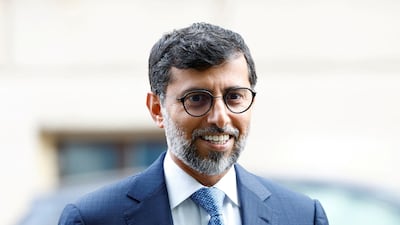Oil markets are absorbing Opec+ production increases and there has been no major build-up in inventories, which indicates higher demand in global markets, Suhail Al Mazrouei, Minister of Energy and Infrastructure, said on Wednesday.
Opec+, which has been curtailing production for several years, reversed its course in April and started boosting production amid plans to regain some market share.
The group will boost production by 548,000 barrels per day for August, it said last week, after increasing output by 411,000 barrels per day for each of May, June and July. The group also approved an increase of 138,000 barrels per day in April.
"You can see that even with the increases for several months, we haven’t seen a major build-up in inventories, which means the market needed those barrels," Mr Al Mazrouei said in Vienna on Wednesday, Reuters reported.
"What we want is stability and you cannot be short-sighted just by looking at the price. We need the price to be right for investments to happen," he said, adding that countries with big oil reserves were still not investing enough.
The comments come as oil markets remained volatile this year amid US President Donald Trump’s tariff plans and the Israel-Iran conflict.
Oil prices started the year strongly. The closing price of Brent, the benchmark for two-thirds of the world's oil, peaked at more than $82 a barrel on January 15, while West Texas Intermediate, the gauge that tracks US crude, hit almost $79 per barrel on that day.
However, demand concerns, a slowing global economy and less-than-stellar growth in China, the world's biggest crude importer, have weighed on crude prices this year.
Mr Trump’s push to impose hefty tariffs on trade partners has been the biggest driver of declining oil prices.
Brent and WTI surged as much as 13 per cent after the conflict broke out between Iran and Israel on June 13 on supply-related disruption concerns. However, prices declined in subsequent days as the geopolitical premium faded and markets focused on fundamentals instead.
Bob McNally, president of Rapidan Energy, told The National in Vienna that "Opec+ have a robust view of demand growth".
"If we look out the window, the oil market is tight. Cushing [a key US trading and storage centre] is empty, diesel inventories in the United States are very low."
However, he said "macro deterioration" is the biggest risk to oil prices in the second half of this year.
"Demand for oil started off in the first quarter at 1.1 million barrels a day, but it hit the skids and slowed down in the second quarter, especially in China, with almost no demand growth,” Mr McNally said.
“The question is whether it's a one-time blip or will China recover? A lot of that depends on these trade talks, on this uncertainty with regard to interest rates and so forth."
Apparent oil demand – an indicator of consumption trends – in China has been running nearly 3 per cent lower year on year for the first five months of 2025, despite economic momentum stabilising in the country, Dubai lender Emirates NBD said last week.
The Federal Reserve last month held its target range for interest rates between 4.25 per cent and 4.50 per cent – the fourth consecutive time it has left rates unchanged.




